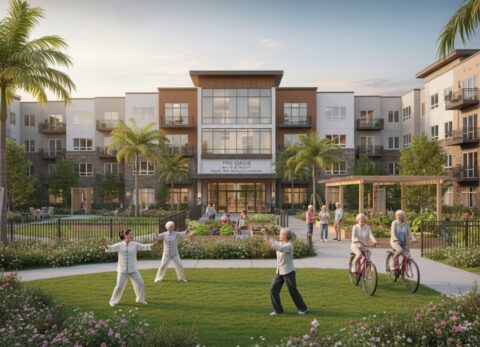Choosing a senior living facility for a loved one is a big decision. It can also be a major financial commitment, and the wide range of prices can make it difficult to understand what you are really paying for.
By learning what affects the cost of senior living, families can plan more confidently and find the right balance between care, comfort, and budget. Read on.
Different Types of Senior Living
Senior living communities come in several forms, and each type has its own pricing structure based on the amount of care provided.
Independent living is meant for older adults who can still manage most daily tasks on their own. These communities focus on convenience and lifestyle, offering things like meals, housekeeping, and social activities. Since medical care is not included, costs are usually lower compared to other types of senior living.
Assisted living is for seniors who need help with everyday activities such as bathing, dressing, or taking medication. These communities provide both housing and personal care services, which makes them more expensive than independent living.
Memory care facilities are designed for people with Alzheimer’s disease or other forms of dementia. They have secure environments, higher staff levels, and specialized programs to support memory and cognitive function. Because of the extra care and safety features, memory care costs more than assisted living.
Skilled nursing facilities provide 24-hour medical care by licensed nurses and therapists. These are the most expensive options since they function much like small hospitals for long-term care.
What’s Included in the Price
The monthly cost of senior living often includes rent, meals, housekeeping, transportation, utilities, and community activities. In assisted living and memory care, the price also covers:
- staff wages
- medical supplies
- customized care plans
Some services-such as private rooms, therapy sessions, or additional transportation-may come with extra fees. It’s always important to ask what is included in the base rate and what might cost more, so there are no surprises later.
Why Prices Vary
Several key factors affect the cost of senior living. One of the biggest is location. Facilities in large cities or popular retirement areas tend to charge higher rates because real estate and labor are more expensive there.
Another major factor is the level of care needed. Residents who require more medical or personal assistance will have higher monthly costs.
The quality of the building and amenities also plays a role. A larger apartment, beautiful grounds, restaurant-style dining, or wellness programs can all increase the price.
Finally, staffing makes a big difference. Facilities with more caregivers per resident or specialized staff training often charge more, but this usually results in better care. Check out the cost of senior living in Des Plaines IL, to learn more.
Paying for Senior Living
Many families are surprised to learn that Medicare does not pay for long-term stays in senior living facilities. Most people use personal savings, long-term care insurance, veterans’ benefits, or Medicaid (for those who qualify) to help cover costs. Some communities offer tiered pricing or allow residents to pay only for the services they use, making care more affordable.
Making a Smart Decision
When comparing senior living options, it’s important to consider both the cost and the quality of care. Visiting communities in person, asking for detailed cost breakdowns, and reviewing contracts carefully can help families make informed choices.
Understanding what goes into the cost of senior living facilities helps families plan and feel confident that their loved ones will receive the care, comfort, and dignity they deserve.
If you want to read more articles, visit our blog.





